(Left: Painting from Naval Museum of Sailing Ship Rounding Cape Horn)
In 1914 the Panama Canal opened, creating modern shipping. Like any seismic change, the impact of the canal would be felt half a world away in Valparaíso, Chile. The town was booming from the shipping of copper, nitrates, guano and California gold from the Pacific to the Atlantic. Valparaíso is a wel-situated stop before rounding the dangerous Cape Horn. The Porteños of Valparaíso (Port people) became rich. The term Porteños is used for residents of BA, Valpo and a port city in Costa Rica. Hmm, may be New Yorkers should join the club.
The architecture of Valpo (local speak for Valparaíso) tells its history with grand Italianate public and private buildings built during a period of shipping wealth. The city has many hills that have created strong neighborhoods – who wants to walk up and down a hill every time for the newspaper? The locals also made the city flatter by installing dozens of funiculars. Only 6 are running today as the rest are hindered by the combination of living on a very active earthquake fault and a less active government maintaince program. During a ride on a funicular I hoped that the count of active funiculars would stay at 6 and not drop to 5.
Not all of the architecture of the era was grand, but it still tells the port city’s history. I was attracted to the houses of the middle class which are clad in brightly painted corrugated metal. The corrugated metal started its second life as a housing material after serving as ballast holder on empty inbound ships. The ships would remove the ballast and its corrugated metal holders. Quick minded Porteños recycled it into the sidings for their dwellings, protecting the adobe bricks from the moist sea air.
The Panama canal opening hurt the Valparaíso economy and the architecture shows this history of the rich fleeing Valparaíso. Similar to the 1998 Asian financial crisis, there is a half built hotel in Valparaíso. The sponsors of the project realized they were throwing good money after bad and left the stone outline of a 4 story hotel that has remained for the last century.
- The hills of Valparaiso look like SF
- Hotel that was never finished
- Great example of Corrugated Metal
- Over 100 stairs up to this neighborhood
- More middle class housing
- The town is the home of the Chilean Navy
- Great view of the modern port
- Two Fish Tourists
- House in the Hills
- Our walking group
Gateway to Cape Horn
Valpo’s naval museum honors the sailors who have rounded Cape Horn. Rounding this tip of South America is the Mount Everest for sailors. The winds are unfettered by land and are chilled by the South Pole. The Brotherhood of Captains of Cape Horn, founded by the French in 1937, created a few titles for those that had rounded the Horn.
ALBATROSS: Captain commanding a sailing vessel without using engines. Two Fish one day? Not a chance.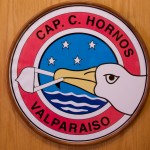
MOLLYHAWK: Crew that rounded the Horn but were promoted later to the title of Captain.
CAPE PIGEONS: Crew or passengers who sailed aboard a merchant sailing vessel that rounded the horn.
The system is pretty biased in favor of captains. Crew in the old sailing ships had to climb 60 feet in the air during a storm, while the Captain sipped his tea. When they returned to land, the tea sipper is referred to by an elegant creature and the guy who risked his life is called a pigeon. It sucks not to be Captain. I, Jason, would like to state for the record that I am the Captain of Two Fish.
Crazy Bike race
Every year some insane folks race down hill the steep, narrow and bone breaking streets and alleys of Valparaíso. The race is far too dangerous to be allowed in the US, so that makes it a fan favorite of mine. Let YouTube take it away …
Arturo Prat – War of the Pacific
I hope my history lessons do not bore our readers, but learning the area’s history is one of the reasons I enjoy traveling. I believe history often impacts cultures in profound ways and Chile is no exception.
The Chilean Naval Museum is a shrine to Arturo Prat, there are Prat statues across northern Chile and Prat street is the most common name for a road in Chile. Why is Arturo Prat such a big deal for the Chileans?
He died in an incredibly heroic fashion while fighting the Peruvians in the Battle of Iquique. The Chileans lost the Battle, but like the expressions says, won the war. The story of Prat’s bravery was told around Chile and created an environment where Chileans supported the war financially and volunteered to serve in the military. This conflict between Chile and Peru/Bolivia was fought in the late 1800’s. The fight was over the barren land we had just visited, the Atacaman Desert. This region was owned partly by Peru and partly by Bolivia, but the nitrate mines were run by Chileans. The Peruvians started to nationalize some of these mines, and the Bolivians levied several large tax increases. So the Chileans decided they would fight for the land and thus avoid nationalization and taxes. Money and minerals are frequent reasons to enter wars, and South America is no exception. The Chileans were able to defeat the united opposition of Bolivia and Peru. This huge victory would not have been possible without the inspiration of Prat. The untapped mineral richness of these lands was unknown at the time. The Bolivians lost their access to the sea and Peru lost valuable tax revenue. In the ten years following the war, the national treasury of Chile grew by 900%, driven by nitrate mining revenues from the new lands. Some years following the expansion the Chilean economy imploded as synthetic nitrate was created in Germany. This depression in Chile was refered to as the Nitrate Crisis. Easy come easy go? These days, copper fuels the economy and new demand for lithium and other metals provides a secure future.
So today the Bolivians and the Peruvians are bitter about their lost land and it still shows. One example is Bolivia will not allow Argentina’s natural gas to enter Chile. A piece of advice – do not visit Peru or Bolivia and check into a hotel under the name Prat.

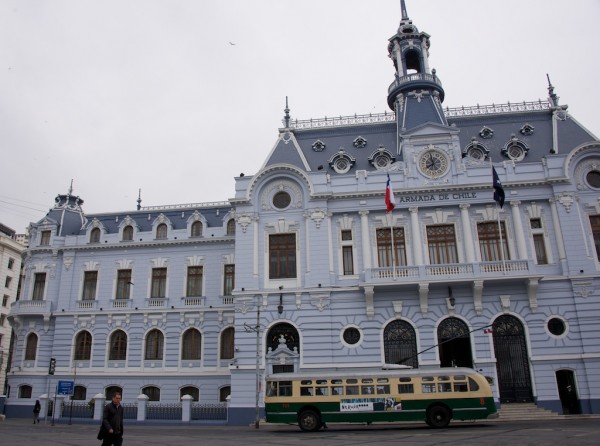
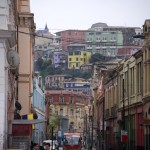
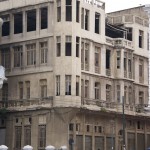
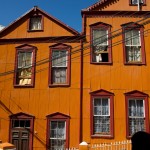
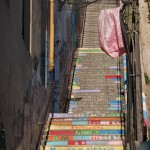
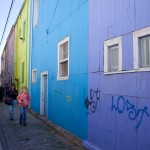
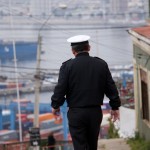
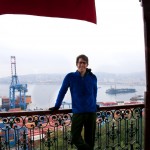

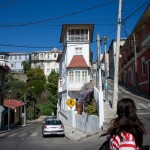
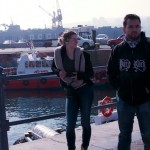
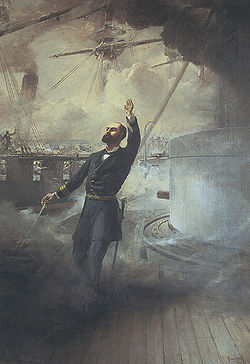


7 Responses to Valparaíso, Chile – Port City